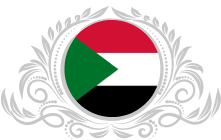
KHARTOUM SIGHT SEEING
Khartoum’s state has three main towns, Khartoum, Khartoum North, and Omdurman, all joined by four bridges.
One of the most exciting places to visit in Khartoum is the National Museum, which is the custodian of the rich historical heritage of Sudan. There is also the Ethnographic Museum, which reflects the Sudanese people’s cultural life and traditional artifacts. The Museum of Natural History sheds light on the diverse animal life of Sudan. Visitors can also enjoy Khartoum’s Botanical Garden, where they can enjoy the wonders of Sudan’s rich botanical variety.
Visiting Omdurman acquaints tourists with Sudan’s unique and traditional markets and bazaars. It was made the capital of the Mahdists, who fought the English colonizers at the end of the last century. Hence, visiting the Mahdi and the Khalifa Museum has no alternative.
Omdurman also has a boatyard where traditional boats are made near the Nile. West of Omdurman, about 40 minutes’ drive, is the camel market. Here, camels brought from western Sudan are offered for sale or barter.
KAWAHLA REGION:
This is situated about 325 km southwest of Khartoum. The region is in the rich Savanna Belt, home to various birds, rabbits, and gazelles.
WEST OMDURMAN
A semi-desert region southwest of Omdurman that extends north and west up to the Western Desert. It is a region abundant in desert gazelles, onyx, and fowl birds. The hunting season is typically from October to July.
SIGHTSEEING SAFARIS
One of the most famous reserves in the country is Dinder Park, located some 585 kilometers southeast of Khartoum. Our four-wheel-drive vehicles, prepared especially for such trips, cover this distance in 10 hours, passing on their way through the Gezira Scheme, regarded as the largest irrigated agricultural scheme under one administration in the world.
After that, one could encounter the town of Sennar, the capital of the first Islamic kingdom in Sudan (1504–1821). The city is home to the Sennar water dam on the Blue Nile, which dates back to 1925 and irrigates the Gezira Scheme.
The journey to Dinder Park takes one across Singa Bridge, and another 4-hour’ drive takes one to the outreaches of the park at a camp named Galago. From here, our tour begins with wild animals and birds, not to mention the park’s beautiful landscape.
Dinder Park is one of the largest wild reserves in Africa. The park boasts a unique diversity of animals and birds, including buffaloes, lions, kudus, and gazelles, in addition to a wide variety of baboons and monkeys. On its southern outskirts, elephants and giraffes can roam the area.


